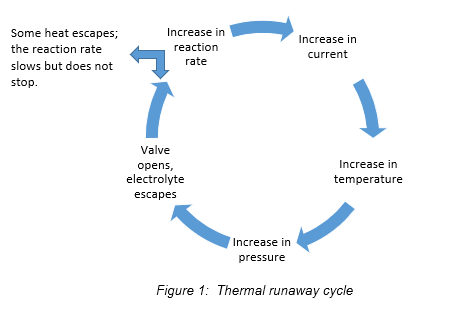Share this
Battery Standards Overview
by PowerShield on May 13, 2019 11:55:39 AM
This is the eleventh in a series of units that will educate the reader on the part played by a battery in an uninterruptible power supply (UPS) system. In this unit we look at the role of battery standardization and why it matters to users of large stationary battery systems.
Why standards?
Standards in general are essential to ensure proper communication among everybody associated with a system. These can include manufacturers, transporters, distributors, installers, technicians, operators, fire and safety regulators, environmental regulators, and recyclers (to name only a few). Standards ensure interoperability and compatibility between the many elements of a battery system. Other considerations include product safety and testing, quality, reliability and environmental compliance. Many standards apply to the design, manufacturing, and testing of battery equipment. In this unit however, we limit the scope from many dozens of existing standards to only those most relevant to a user.
What is the difference between a code and a standard?
A “standard” (with a lower case “s”) is generally voluntary, although strict adherence to certain standards may be necessary for marketing or other reasons. The Institute of Electrical and Electronics Engineers (IEEE™) publishes three different levels of standards. At the low end is the “Guide” which is primarily tutorial in nature, characterized by use of words such as “may,” “might,” or “could.” In the middle is the “Recommended Practice” which is more about how to do something, characterized by use of the word “should.” At the top is the Standard (with upper case “S”) directing the exact way something must be done, characterized by use of the word “shall.” While adoption of a Standard may be voluntary, strict compliance with the Standard is necessary when it is adopted. Some government regulations might require that “safety standards” must be followed even if they are not specifically codified. For example, if a worker is injured because the employer ‘could have and should have’ followed existing safety standards and best practices but failed to do so, the company might be subject to penalties and fines.
A “code” is the same as a law or regulation. It is implemented and enforced by a government body. Typically a government (city, state or region) will “adopt” an existing standard – but not necessarily the most current edition. When that happens, compliance is mandatory. Some standards-writing organizations (for example the National Fire Protection Association® [NFPA®] in the U.S.A.) publish “model codes.” A government agency might modify the text of a model code to fit local requirements. Local fire codes and building codes are examples. Failure to comply can lead to citations and penalties.
What standards are most important to users of large battery systems?
First and foremost, the user should ensure that the battery supplier guarantees compliance to applicable manufacturing and quality standards. More important to battery users are standards relating to installation procedures, maintenance procedures, and recycling.
Who are the primary publishers of battery standards?
The European Committee for Electrotechnical Standardisation (Cenelec) and the International Electrotechnical Commission (IEC) are the main battery standardisation bodies covering Europe, Middle East and Africa (EMEA) regions. In the Americas and much of the rest of the world, IEEE is the predominant publisher of battery standards. Some other nations create their own standards and codes.
What are the standards most relevant to users of large stationary battery systems?
In this paper we will focus on IEEE standards. The following table identifies those of greatest interest to the user:
| IEEE Standard Number | Title | Description |
| 450 | Recommended Practice for the Maintenance, Testing, and Replacement of Vented Lead-Acid (VLA) Batteries for Stationary Applications | Recommended maintenance, test schedules, and testing procedures that can be used to optimize the life and performance of permanently-installed, vented lead-acid storage batteries used in standby service. It also provides guidance on when batteries should be replaced |
|
485 |
Recommended Practice for Sizing Lead-acid Batteries for Stationary Applications | Methods for defining the dc load and for sizing a lead-acid battery to supply that load for stationary batty applications in full float operations. |
| 1184 | Guide for Batteries for Uninterruptible Power Supply (UPS) Systems | Guide for making informed decisions on selection, installation design, installation, maintenance, and testing of VLA, VRLA and Ni-Cd stationary standby batteries used in UPS systems. Describes how the UPS battery charging and converter components can relate to the selection of the battery systems. |
| 1187 | Recommended Practice for Installation Design and Installation of Valve-Regulated Lead-Acid Batteries for Stationary Applications | Design practices and procedures for storage, location, mounting, ventilation, instrumentation, preassembly, assembly, and charging of valve-regulated lead-acid (VRLA) batteries. Required safety practices are also included. |
| 1188 | Recommended Practice for Maintenance, Testing, and Replacement of Valve-Regulated Lead-Acid (VRLA) Batteries for Stationary Applications | Maintenance, test schedules, and testing procedures to optimize the life and performance of VRLA batteries, including how to determine when batteries should be replaced. |
| 1189 | Guide for Selection of Valve-Regulated Lead-Acid (VRLA) Batteries for Stationary Applications | Methods for selecting the appropriate type of valve-regulated, immobilized-electrolyte, recombinant lead-acid battery for any of a variety of stationary float applications. The purpose is to make the reader aware of all significant issues that should be considered when selecting VRLA batteries, so that the user might make an informed decision. |
| 1375 | Guide for the Protection of Stationary Battery Systems | Items to consider in the electrical protection of stationary battery systems. |
| 1491 | Guide for Selection and Use of Battery Monitoring Equipment in Stationary Applications | Operational parameters that may be observed by battery monitoring equipment used in stationary applications and the relative value of such observations, including a means for establishing specifications for the desired parameters to be monitored. |
| 1578 | Recommended Practice for Stationary Battery Electrolyte Spill Containment and Management | Factors relating to electrolyte spill containment and management for vented lead-acid (VLA), valve-regulated lead-acid (VRLA), and vented nickel-cadmium (Ni-Cd) stationary batteries. |
|
IEEE Std. 1635/ ASHRAE Guideline 21 |
Guide for the Ventilation and Thermal Management of Batteries for Stationary Applications | Ventilation and thermal management of stationary battery systems as applied to VLA, VRLA, and Ni-Cd batteries. For each category, both the technology and the design of the battery are described in order to facilitate user understanding of the environmental issues associated with each type of technology. |
| 1657 | Recommended Practice for Personnel Qualifications for Installation and Maintenance of Stationary Batteries | Defines the areas of recommended knowledge for installers and maintainers of stationary standby batteries and related systems to the extent that they affect the battery, personnel safety and reliability of any related systems |
| 1881 | Standard Glossary of Stationary Battery Terminology |
Provides a useful reference for those in the stationary battery industry and harmonizes definitions used across IEEE stationary battery standards |
This table is not an all-encompassing list of battery standards. It is intended to direct the user to about eighty percent of the standards likely to be encountered. The full list would include dozens more. The reader should contact the battery or UPS manufacturer with specific questions about compliance with any standard. The reader should contact the local enforcement agency with questions about applicable codes.
Share this
You May Also Like
These Related Stories

Thermal Runaway and Thermal Walkaway

VRLA Installation and Commissioning

All things big and small
- September 2024 (1)
- December 2021 (2)
- March 2020 (1)
- January 2020 (1)
- December 2019 (1)
- October 2019 (2)
- July 2019 (1)
- May 2019 (2)
- April 2019 (1)
- March 2019 (2)
- January 2019 (1)
- December 2018 (1)
- November 2018 (1)
- August 2018 (3)
- July 2018 (1)
- June 2018 (2)
- May 2018 (2)
- March 2018 (2)
- February 2018 (2)
- January 2018 (1)
- November 2017 (1)
- October 2017 (1)
- August 2017 (3)
- June 2017 (1)
- March 2017 (1)
- November 2016 (1)
- October 2016 (1)
- September 2016 (2)
